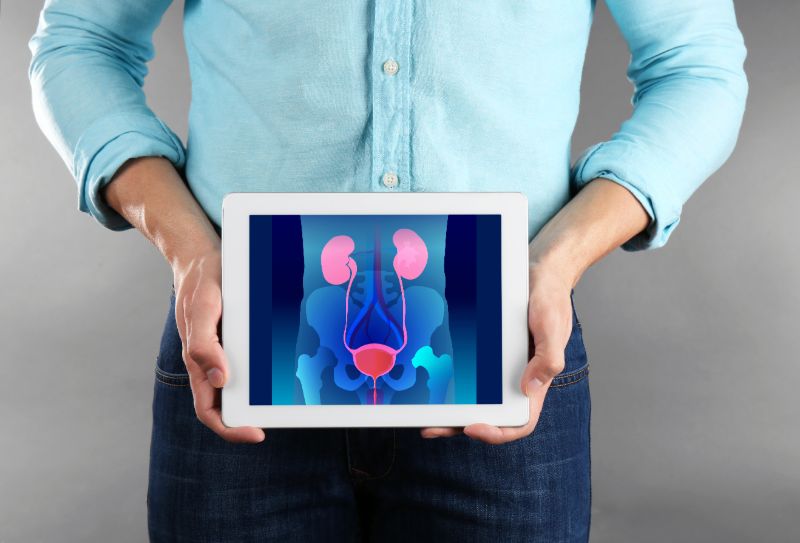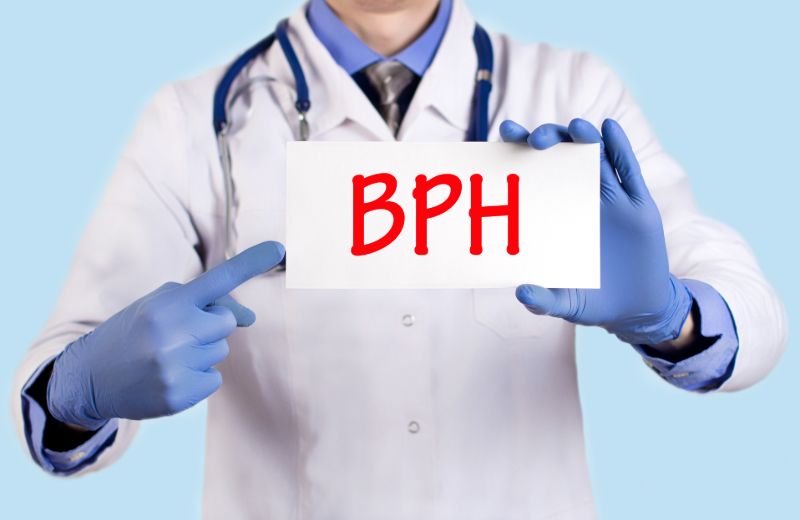Prostate Artery Embolization | What Is PAE
A majority of men over 50 develop an enlarged prostate. The condition is not only uncomfortable but can also affect ejaculation and urine flow.
That is where prostate artery embolization comes in.
Learn all about the procedure, its benefits, and the risks associated with it in the sections that follow.
RELATED: Enlarged Prostate | Causes, Symptoms, Treatment & Prevention
All You Need to Know About Prostate Artery Embolization

What Is Prostate Artery Embolization?

According to Yale Medicine, about half of all men between the ages of 51 and 60 develop an enlarged prostate.
A small number of men start to show signs and symptoms of the condition by their mid-40s.
The number continues to climb in the decades that follow. The National Institutes of Health estimates that as much as 90 percent of men over 80 have the condition.
An enlarged prostate (benign prostate hyperplasia or BPH) is neither cancerous nor life-threatening.
However, it is uncomfortable and may affect a man's urine flow and ejaculation.
An enlarged prostate may block the urethra, which then causes lower urinary tract symptoms like:
- Urinary incontinence
- Increased urinary urgency, frequency, and pain upon urination
- Irritative voiding symptoms
Most physicians would recommend transurethral resection of the prostate as a treatment option.
Recently a new procedure for treating the condition has become more popular. This is known as prostatic artery embolization or PAE.
PAE is an outpatient procedure that an interventional radiologist performs.
It involves releasing these tiny, microscopic plastic beads into the arteries that feed the prostate gland.
The beads then travel to the prostatic arteries of the patient. This permanently blocks off the blood flow that causes swelling in the prostate.
How Does PAE Differ From Other BPH Treatment Options?

When it comes to dealing with BPH, men are typically presented with two other treatment options: UroLift and TURP.
Here is a look at how these two differ from PAE:
UroLift
This treatment uses small implants that hold the prostate tissue away from the urethra.
Unfortunately, the procedure cannot be applied to every patient.
It is suitable only for men who have smaller prostate glands. It is also ineffective for those with a large median lobe.
The median lobe is a part of the prostate that may grow into a person's bladder, a condition that affects as much as 40 percent of men.
TURP
Transurethral resection of the prostate, more commonly known as TURP, is also a common treatment option for BPH.
The procedure involves the insertion of a resectoscope into the tip of the penis and through the urethra.
With the tool, the doctor is then able to trim away any excess prostate tissue, which then restores urine flow.
While TURP is also a minimally-invasive procedure like PAE, it is still a kind of surgery.
This means that it still has some potential risks such as the ones included by Johns Hopkins Medicine, including:
- Urinary incontinence
- UTIs
- Erectile dysfunction (ED)
- Dry orgasms
- Low blood sodium levels
- Heavy post-operative bleeding
Who Is a Candidate for Prostatic Artery Embolization?

One of the best things about PAE is that it is an applicable treatment option for a majority of men who have been diagnosed with BPH.
It is available, especially for those who are either not interested in or ineligible for traditional surgery.
Before the procedure, an interventional radiologist will determine whether PAE is right for you.
The physician may ask about the frequency of urinary symptoms of BPH, the severity of the symptoms, and the effect it has on your quality of life.
He or she may also ask for other tests such as a urinalysis and an ultrasound or MRI of the prostate gland.
In other cases, the doctor may also request a digital rectal exam that will help assess the size of the prostate.
In others, a prostate-specific antigen test to rule out prostate cancer may also be asked for.
RELATED: Top 7 Prostate Health Supplements To Try
What Happens During the PAE Procedure?

The procedure starts with the doctor placing a tiny catheter into the arteries that feed into the prostate gland.
A solution that contains thousands of microscopic plastic beads is then injected into the catheter. This blocks off the blood supply that causes the enlargement.
Over time, the gland is starved of the blood supply which causes it to shrivel up.
The urethra then opens up and urine flows more normally. Shrinking the prostate is not considered to have any negative effects on sexual function.
This is all done through a small, quarter-inch hole in the skin, with very few patients needing general anesthesia. The procedure is not considered painful, and most patients go home on the same day with nothing more than a small bandage.
Recovery after the procedure only requires a few days and a patient's quality of life often goes back to normal after that same period.
What Are the Benefits of PAE?

Some of the many benefits of a prostate artery embolization include:
- It is minimally invasive
- It does not have any sexual side effects
- There is a lower risk of urinary incontinence
- There is less discomfort and pain both during and after the procedure
- It does not require the use of a bladder catheter post-operation
- Results are experienced by the patient within a few days
What Are the Risks of a Prostatic Artery Embolization?

Compared with other common treatments for BPH, PAE has very few side effects. TURP is often associated with retrograde ejaculation, erectile dysfunction, impotence, and incontinence.
On the other hand, patients who undergo prostate artery embolization typically only experience “post-PAE syndrome” according to Stanford Health Care.
These effects include fever, vomiting, nausea, pelvic pain, and painful urination which only last for a few days.
Experienced physicians can make sure that the procedure is done safely and effectively. The procedure also has very little risk for complications.
The National Library of Medicine, however, does state that in rare cases, side effects may include transient blood in urine, acute urinary retention, and rectal bleeding.
Want a clearer picture of what prostate artery embolization looks like? Check out this short video courtesy of Merit Medical:
Men with enlarged prostates may find it difficult to live a normal life. A prostate artery embolization may be one of the best answers to this problem.
If you are experiencing any of the symptoms above, make sure to consult with your physician for proper diagnosis and treatment.
Do you have other questions about prostate artery embolization? Ask us in the comments section below!
Up Next:
- Have You Heard About HIFU? Why HIFU May Be Your Best Bet to Beat Prostate Cancer [PODCAST]
- Prostate Massage | Everything You Need to Know
- Urine Color Wheel | 19 Pee Color Meanings Your Urine Is Revealing About You
Join the healthy living conversation with us on Facebook, Instagram, and Pinterest. We want to hear your story—let’s connect via these channels. Find our community online and join the healthy living revolution today!
Trending
Get Updates
SIGN UP FOR OUR NEWSLETTER TODAY

Weekend Wellness: How to Create a DIY Spring Retreat

Bedtime Routine Reset: Beat the DST Slump and Sleep Better!

Wellness Rituals for St. Paddy’s: Celebrate & Stay Energized!
Related

Weekend Wellness: How to Create a DIY Spring Retreat

